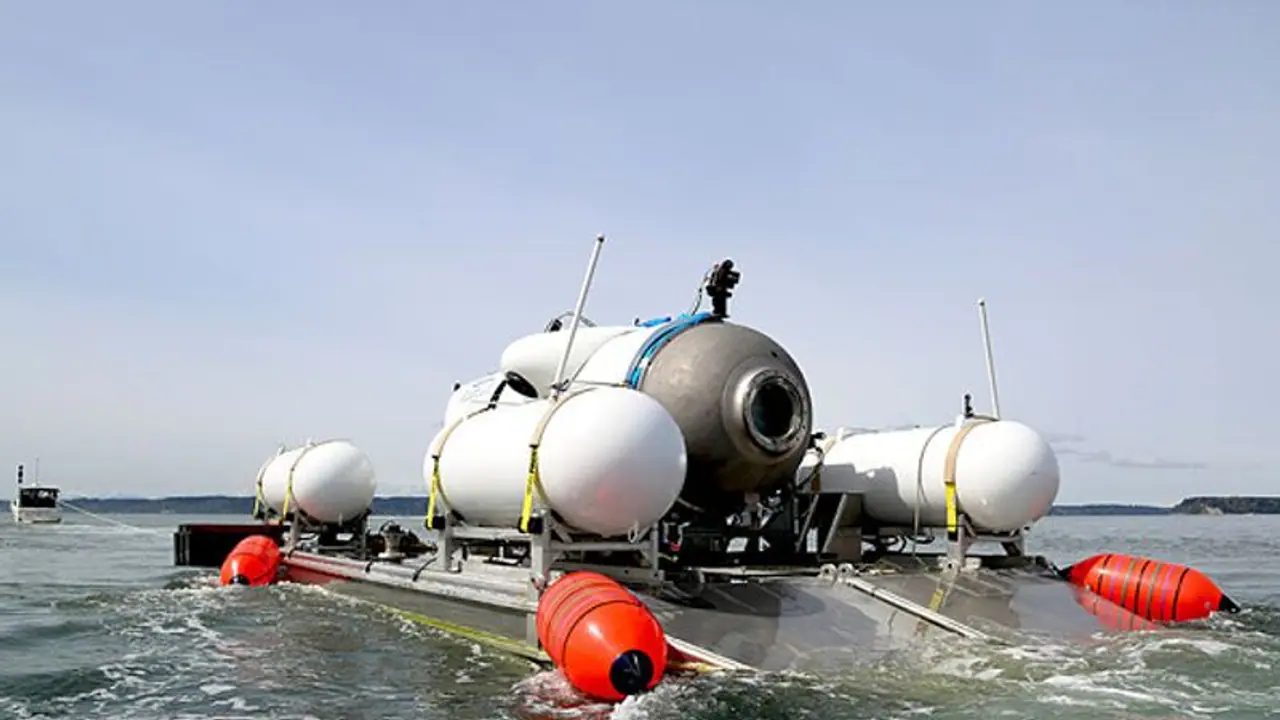The vessel, named Titan, lost communication with tour operators on Sunday while about 435 miles south of St John's, Newfoundland, during a voyage to the Titanic shipwreck off the coast of Canada.
The oxygen on the lost Titanic submersible is due to run out on Thursday, thus finding it in time will require a "miracle" as banging can still be heard from the depths every 30 minutes. OceanGates' Titan vessel, which was travelling to the Titanic wreckage off the coast of Canada, lost contact with tour operators on Sunday while it was about 435 miles south of St. John's, Newfoundland. On Sunday afternoon, the most well-known shipwreck in the world was just above the final "ping" of its homing device. There is now a countdown till the critical oxygen supply, which will run out at 5:38 PM IST.

British billionaire Hamish Harding, OceanGate CEO Stockton Rush, French naval veteran PH Nargeolet, Pakistani businessman Shahzada Dawood, and his son Suleman, who is only 19 years old, are among the 'Titan Five' who are still on board. The only man on board with the knowledge and experience to either help rescuers discover them or liberate the Titanic if it is stuck on the seabed is Nargeolet, who has visited the Titanic 35 times, more than any other individual.
As radar continues to pick up a hammering sound from the depths, a fleet of at least ten ships, two robot subs, and numerous aircraft are circling over the Titanic, searching the Atlantic for any sign of Titan. But the US Coast Guard has acknowledged that it is unsure whether the sound is coming from the five guys banging on the side of their submarine or is merely the sound of the sea, which may include pieces of the Titanic itself dropping at a depth of 12,500 feet.
Here's a look at the vessels involved in the search for the missing Titanic submersible:
The search operation is being led from Boston, Massachusetts, and includes navies, commercial deep-sea firms, and authorities from the US and Canada. Here are their individual capabilities and what we know about them.
1. A commercial cable-laying ship called Deep Energy has two ROVs that can reach depths of up to 3,000 metres (10,000 feet).
2. The Canadian offshore supply ship Atlantic Merlin has a 4,000-meter winch system. carries ROVs, although its operating depth is unknown.
3. Two ROVs are aboard the Skandi Vinland, a submerged support vessel, however it is uncertain to what depths they can operate.
4. An ROV capable of operating at the depth of the Titanic wreckage is aboard the French-operated ship L'Atalante as it approaches the location.
5. Commercial ship Horizon Arctic carrying support equipment
6. Canadian naval ship near Glace Bay with decompression chamber and ready to render aid
7. The Canadian Coast Guard's John Cabot is a scientific research vessel with sonar search capability.

Decoding the map of the search site shared by the US Coast Guard:
An image from the US Coast Guard showing search patterns for the Titan has been shared on social media, even as search for the doomed vessel continues. Rob Larter, British Antarctic Survey, told the BBC that the map is 'not super helpful' because the scale on it is missing.
"You will see there is a variety of different grids on there, some of them are denser than others. It is 2D as well, and remember we are in a 3D environment - we are not sure if this is from the surface or further down in the water," he told BBC.
"I think that X shows you where the Titanic is, and it is interesting that the grids aren’t centred so the Titanic’s not in the middle," Larter added.
He adds the fact the search area is so large "suggests that the rescue team has not narrowed down the area as a result of the banging sounds". "The fact that some of the grids are longer than others and different shapes suggests that different instruments are being used," he noted.
"Although it’s a desperate situation, there’s hope, and you have to stay optimistic for as long as possible," Larter stated, explaining that it searching Titanic submersible using sonar is impossible because it was too small. The Victor 6000, the only remotely operated underwater vehicle (ROV) able to operate at the necessary depth, had just arrived on the scene last night.
According to Prof. Alistair Greig of University College London, once the Titan had been freed by a ROV, it would typically take it two hours to rise to the surface under its own buoyancy if it were discovered stuck in wreckage on the ocean floor. “Every step takes time and time is what we are running out of,” he told BBC.
Despite the grim deadline, rescuers insisted ‘we always have hope’ for the five passengers. Response co-ordinator Captain Jamie Frederick for First Coast Guard District said, "This is a search and rescue mission, 100 per cent."
Deep-sea explorer Dr David Gallo believes it would take a 'miracle' to rescue those trapped in Titan, but remains optimistic. "Maybe two days ago my hope was sliding downward rapidly, but then these noises appeared and there seems to be very credible sources there, credible and repeatable," he told Good Morning Britain.
"We'll see how that pans out but everything is happening very quickly, so we have a race against time. Our hopes are high. We need a miracle at this point, but miracles do happen, so I'm very optimistic," he added.
The fact that the underwater vehicles may be able to locate Titan, which was travelling towards the Titanic ruins 12,500 feet below the surface, but it will require additional specialised instruments for the enormous task of pulling it up, adds to the time constraint.
